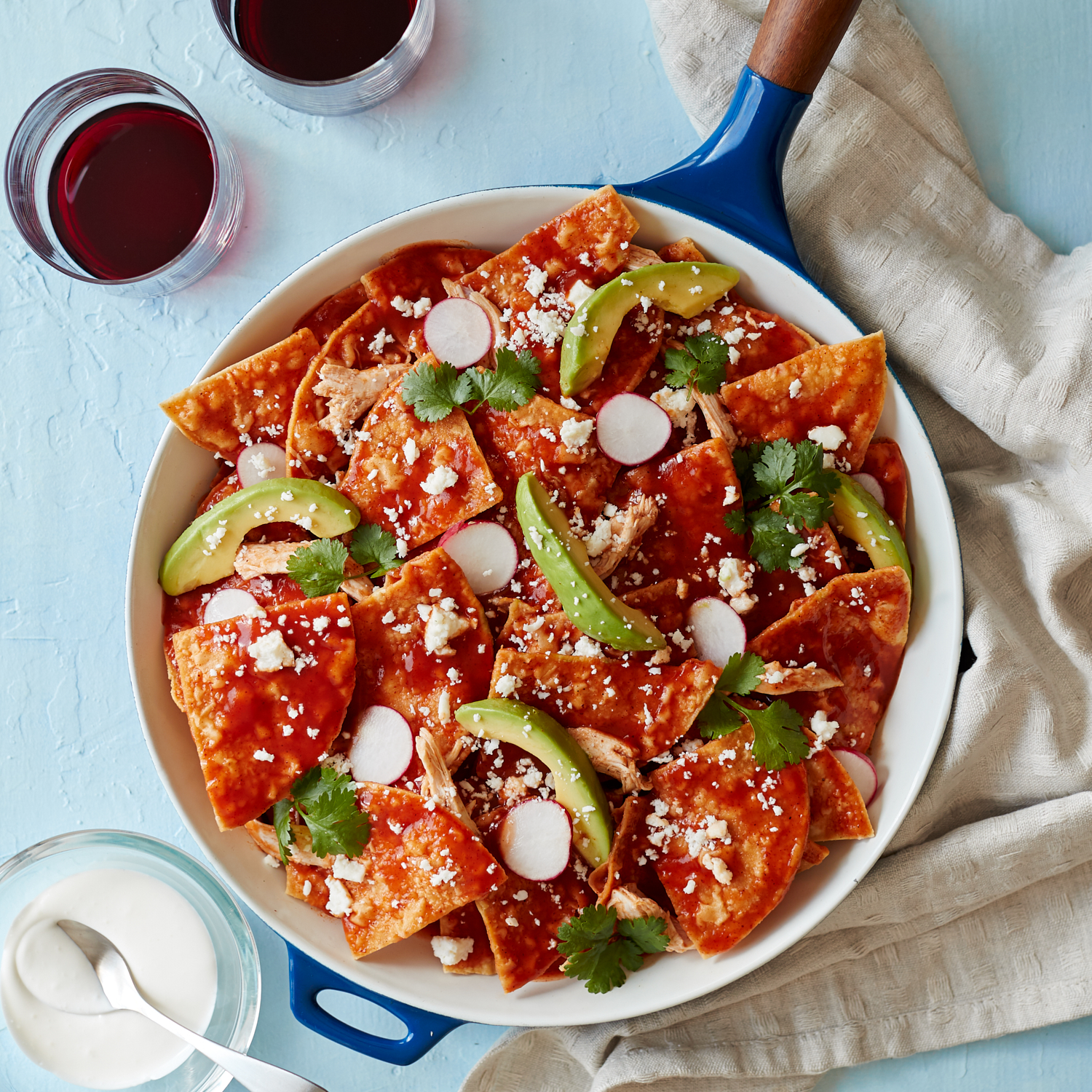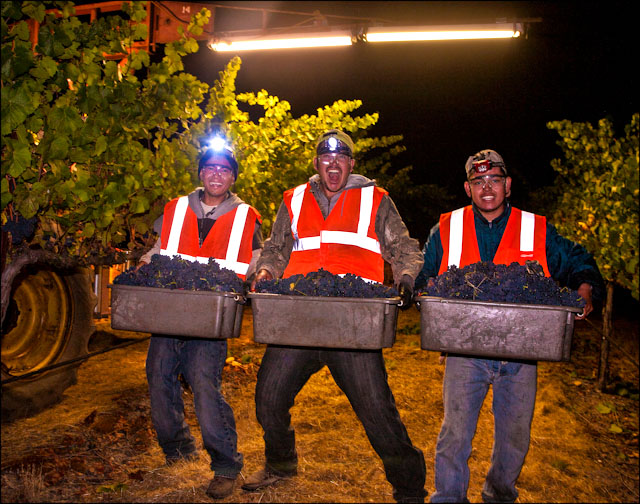The Recipe
Chicken Chilaquiles
When life gives you sweet, California-grown tomatoes, make chilaquiles, a genius use for tortillas that are a few days old. September is the height of the harvest for the meaty plum tomatoes that make thick, flavorful sauce. Resist the temptation to substitute store-bought tortilla chips for the home-fried tortillas; the chips soften too much, and the result is not nearly as satisfying.
Wine suggestion: California Zinfandel or Merlot

Ingredients
- 6 day-old corn tortillas, about 6 inches (15 cm) in diameter
- Canola oil for frying
- 1 bone-in chicken breast, 10 to 12 ounces (285 to 340 g)
- 2-1/2 to 3 cups (.6 to .7 l) salted chicken broth, or part broth, part water
- 1-1/2 pounds (675 g) plum (Roma) tomatoes
- 3 half-inch-thick slices of white onion, peeled
- 4 large garlic cloves, unpeeled
- 1 tablespoon canola oil
- 1 teaspoon dried Mexican oregano
- 1 tablespoon chipotle chile en adobo, or to taste
- Kosher or sea salt
Garnishes:
- 1/4 cup (60 g) crema (Mexican sour cream)
- 1/3 cup (50 g) crumbled queso fresco
- 2 or 3 radishes, sliced thin
- 1/2 small avocado, sliced lengthwise
- Cilantro leaves
Serves 2 to 4
Directions
Stack the tortillas and cut into 6 wedges to yield 36 pieces. In a heavy saucepan, heat 1 inch (2.5 cm) of canola oil to 370F (185C). Adjust the heat to keep the temperature steady. Fry the tortilla wedges 6 or 8 at a time until they darken slightly and become crisp, about 1-1/2 minutes, stirring frequently to keep them from sticking together. Transfer with a skimmer to paper towels to drain.
Put the chicken breast in a small saucepan and add broth just to cover. Bring to a simmer over medium heat, adjust the heat to maintain a gentle simmer, and simmer until the chicken is just cooked, about 15 minutes. Remove the chicken breast to a plate with tongs and let cool. Remove the skin and bones and shred the meat coarsely by hand. Reserve the broth.
Preheat the broiler and position a rack about 6 inches (15 cm) from the heat. Line a heavy rimmed baking sheet with aluminum foil and put the tomatoes, onion slices, and garlic on it. Broil, turning as needed, until the onions and garlic have softened and charred in spots and the tomatoes are blackened, with split skin and soft flesh. With tongs, transfer the vegetables to a plate as they are done. (The garlic and onion will be done before the tomatoes.) Peel the garlic. Discard the tomato skins and core, then chop the tomatoes coarsely. Put the tomatoes, onion, and garlic in a blender and blend until smooth.
Heat the 1 tablespoon canola oil in a 12-14 inch (30-35 cm) skillet over medium-high heat. When the oil is hot, add the sauce. Be careful—it will immediately hiss and bubble up. Adjust the heat to maintain a brisk simmer. Add the oregano, crumbling it between your fingers. Add the chipotle and salt to taste and simmer, stirring often, until the sauce is thick and flavorful, about 5 minutes.
Add 1-1/4 cups (0.3 l) of the reserved chicken broth and bring the sauce to a simmer. Add the fried tortilla chips. Return to a simmer, adding a little more broth if needed to moisten all the chips. Cover and simmer gently for 5 minutes, stirring once or twice. Taste for salt, then stir in the shredded chicken. Replace the cover, remove from the heat, and let stand for about 5 minutes.
Transfer the chilaquiles to a deep serving platter or individual bowls. Garnish with drizzled crema, radishes, queso fresco, avocado, and cilantro leaves. Serve immediately.







